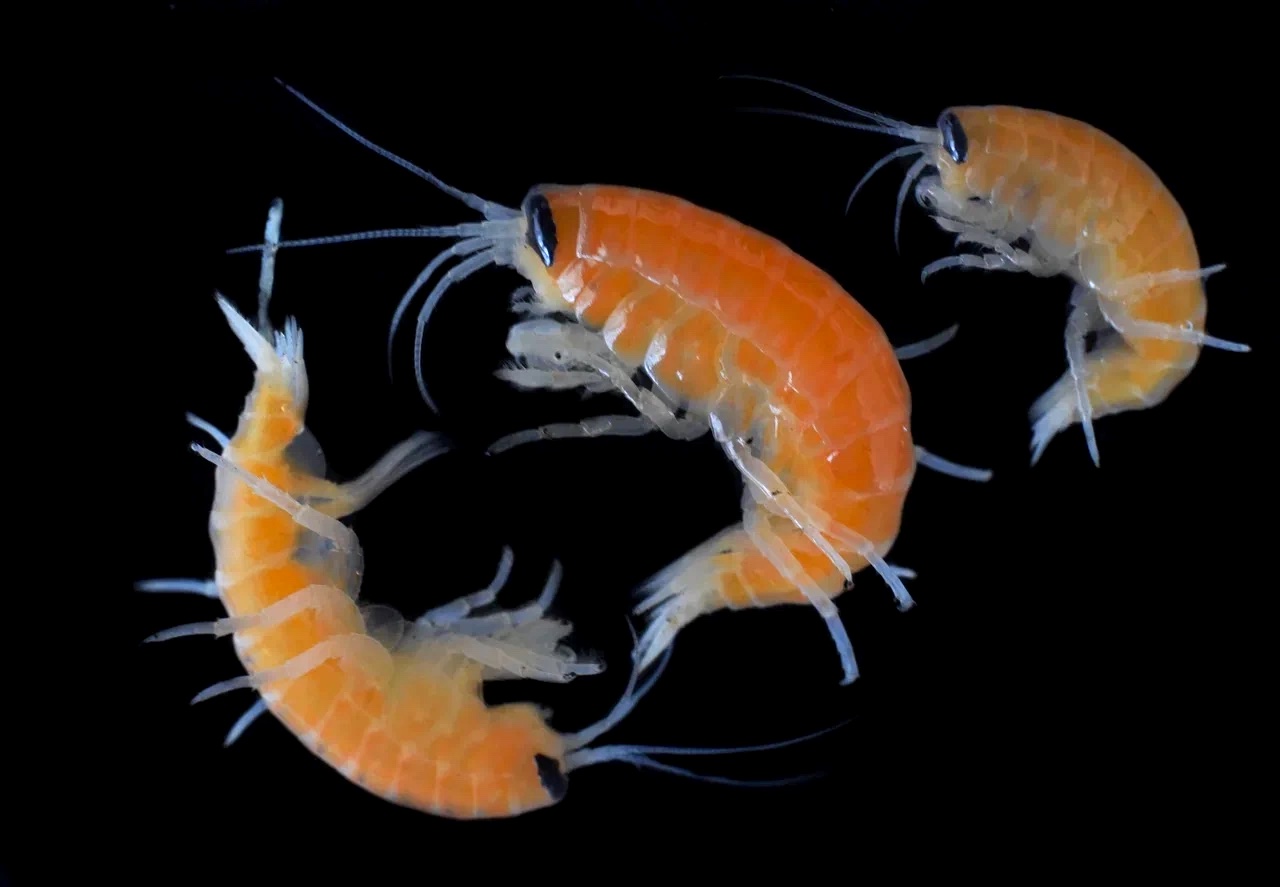The results of the research of the scientists of ISU Research Institute of Biology supported by the grant of the Russian Science Foundation (RSF) are published in the journal Comparative Biochemistry and Physiology Part A: Molecular & Integrative Physiology.
Lake Baikal’s waters are very cold due to its immense depth (1642 meters). Although they can warm up to 25°C in shallow areas during the summer, most of the lake maintains a stable temperature of around 4°C year-round. Despite this, Baikal is home to an incredibly diverse endemic fauna. Among these creatures, the amphipod crustaceans are particularly interesting. There are over 350 species of them in the lake. They inhabit both coastal and deep waters of Baikal, which means they are adapted to living in very wide temperature ranges. Shallow-water species are accustomed to significant seasonal temperature fluctuations, while their deep-water relatives live in perpetual cold and are quite sensitive to even slight changes in their habitat.
Scientists from Irkutsk State University and the University of Rostock (Germany) studied deep-water Baikal amphipods of two species, Ommatogammarus flavus and Ommatogammarus albinus, to understand how their bodies function in the cold environment and how they react to rising temperatures.
The amphipod species selected for the study are endemic, meaning they only live in Baikal, and differ in their habitats and overall stress resistance. Ommatogammarus flavus is sometimes found in shallow waters, but generally prefers depths between 50 and 1000 meters. Ommatogammarus albinus lives only at depths from 100 meters to the maximum depth of 1642 meters. Both species feed on organic remains on the bottom, helping to clean the lake. In addition, they are rich in fat and serve as food for bottom-dwelling fish and even nerpas (Baikal seals).
Biologists caught Ommatogammarus from different depths of Baikal and acclimatized them to laboratory conditions in special chambers. All individuals were initially kept in water at their usual temperature of 4°C. Then, the amphipods were placed in cold conditions (temperatures of 0.5–2°C) or gradually heated (up to 26°C). In each case, the researchers tracked the amount of compounds involved in energy processes in the tissues and the activity of antioxidant enzymes in the animals’ bodies.
The experiments showed that Ommatogammarus flavus tolerates heating better than the deeper-dwelling Ommatogammarus albinus. All individuals of the first species died at 26°C, while the second died at 24°C. However, both species were equally resistant to decreasing temperatures.
In addition, it turned out that the glucose level begins to rise in both Ommatogammarus species as the temperature increases. This indicator exceeded control values tenfold by the end of the experiment, which indicates that both amphipods activate a stress response, dramatically increasing their energy expenditure for it. Such a reaction to heating is unusual for cold-water species that do not encounter high temperatures in nature.
The authors suppose that this response is linked to the fact that all deep-water Baikal amphipods once descended from shallow-water, heat-loving ancestors. Thus, the studied Ommatogammarus species belong to an evolutionarily young group. According to the estimations, they formed no more than five million years ago. Probably, due to their “evolutionary youth”, these amphipods have not yet completely lost the ability to resist heating, as it has happened with more ancient Antarctic species.
Head of the project supported by the Russian Science Foundation Maxim Timofeev, Doctor of Sciences in Biology, Director of ISU Research Institute of Biology:
The ability to tolerate heating found in Ommatogammarus is an evolutionary remnant that may disappear if conditions remain unchanged for millions of years. However, we have another hypothesis. Ommatogammarus are often found near deep-water thermal springs with very hot water, where they may come in search of food – a scarce resource on the bottom of Baikal. These zones often have high biomass and diversity of bottom-dwelling organisms, so the chances of finding food are much higher than in the cold water areas. It is possible that one of the reasons that the deep-water amphipods did not “discard” the mechanisms of the temperature stress response is to occasionally visit these high-temperature areas on the bottom of the lake.
















